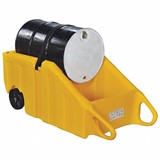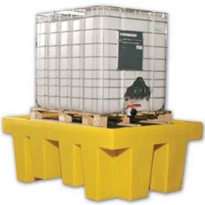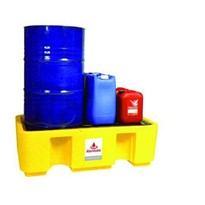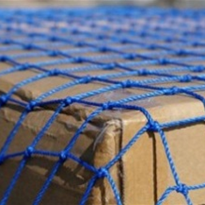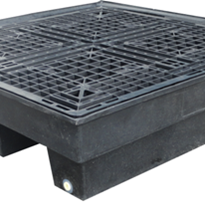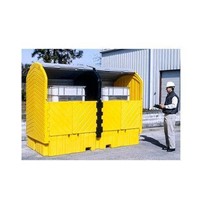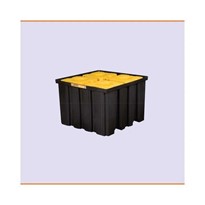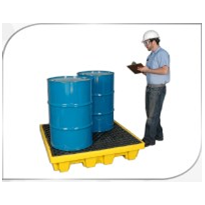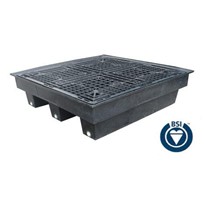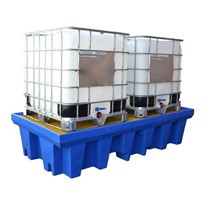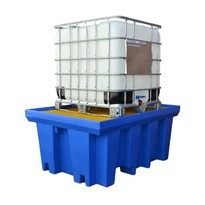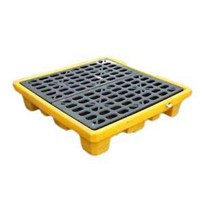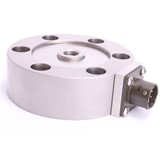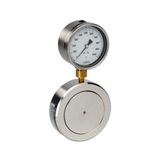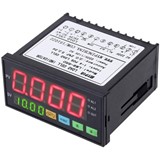Each of these pallets can be worth well over $1000 which means it is crucial to understand load containment and the best practices for your pallets. Load containment is a term that is used to describe the measures taken to prevent the movement of goods on a pallet and keeping the load together and upright.
Currently many businesses are wrapping their pallets and hoping for the best, or are following bad load containment advice from sources that advise to use heavier gauge film or more film in an effort to sell more products. By following this guide you will have a better understanding of the technical expertise behind load containment and the knowledge to effectively analyse your current practices.
Firstly, it's important to understand the impact that poor load containment can have on a business, whether it is the sender or the receiver.
Risk of injury
This risk mostly falls under manual handling injuries by exerting force to push, pull, restrain, hold, throw or move an item. The risk of injury applies not only to your staff, but to people at the receiving end of your goods who need to unpack and move the load.
Chain of responsibility
This responsibility means ensuring the safety of all parties involved in moving your stock, whether this is warehouse staff, transport companies, or the receiver.
Stock loss
This loss can be a result of damaged products or damaged packaging. Damaged packaging often results in unnecessary waste as the goods are either deemed unusable/unsellable or need to be repackaged before being used.
Returned stock costs
This cost is a flow-on effect from stock loss, as returning or repackaging stock can be an unwanted expense.
Vehicle damage
Uncontained loads can damage a vehicle both internally if the load is not contained correctly or externally if it causes the driver to have an accident. This damage also affects forklifts through pallets that have been overloaded or not contained properly
Time
This cost can be linked to all of the above risks as a spilled or damaged load can mean having to resend a completely new load, having to re-stack and wrap the pallet, or can be from the lost productivity of a vehicle being repaired due to damage from uncontained loads
As every pallet is different – containing different goods, different heights and weights – there is a different solution for each application, especially concerning the type of stretch film used. Did you know that a restrained load needs to be able to withstand forces of at least 80 per cent of its weight in a forward direction, 50 per cent of its weight sideways and rearwards and 20 per cent of its weight vertically?
This can be difficult to achieve, however there are a few guidelines that can be followed to optimise load containment:
Lock the load to the pallet
Begin wrapping your load from the pallet to the product to ensure the load won't shift in transit or upon arrival at the end destination. This can be done by tying the end of the stretch film to the pallet before your machine wraps the pallet/before you hand wrap the pallet.
Increase overlap
When wrapping your pallet, increase the amount of overlap between layers of stretch film, as it will lock the layers together to avoid shifting and shear points. For optimum strength and stability, aim for a 135mm overlap.
Avoid column stacking
Stacking the pallet to excessive heights promotes instability and increases the centre of gravity. This means that tall pallets are more likely to be unstable and therefore cause damage to people, the vehicle or the goods themselves. It is recommended to set a maximum height that all pallets must adhere to and stick to it.
Optimise holding force
Make the most of the pallet wraps stretchability by tensioning the film around the load to assist containment. If you are wrapping using a machine this can be as simple as changing a setting on the machine. If wrapping by hand this entails stretching/pulling the film out at each corner before wrapping it around the next side.
Incorporate banding where appropriate
By turning the roll of film while wrapping the load, a thin band can be created which increases the strength of the wrap. This is ideal particularly for unstable and heavier loads as it provides an extra level of security.
By understanding the importance of load containment and following the above information, it is possible to improve pallet stability and reduce costs to the business – before your pallet even leaves the warehouse.
- Suppliers
- New to IndustrySearch? Book a Demo
- Advertise with us
- Login
- Email Marketing
- Buyers
- Get Quotes
- Articles & Ideas
- Login
- Subscribe to newsletter
- My Details
- Get Quotes
- Automation & Control
- Automotive Workshop Equipment
- Commercial Cleaning Equipment & Supplies
- Construction Equipment & Heavy Machinery
- Conveyor Systems & Components
- Electrical & Power Generation Equipment
- Electronic Components
- Farming & Agriculture
- Food & Beverage Processing
- Forklifts & Forklift Attachments
- Hydraulic & Pneumatic Equipment
- Industrial Materials, Tools & Components
- Industrial Pumps
- IT Hardware & Industrial Computing
- IT Software & Applications
- Laboratory Equipment & Instruments
- Manufacturing & Industrial Equipment
- Material Handling & Lifting Equipment
- Metalworking & Machining
- Mining Equipment & Machinery
- Packaging & Labelling Machinery
- Pallet Handling Equipment
- Personal Protective Equipment
- Security & Surveillance
- Test & Measurement
- Transport & Logistic Equipment
- Warehouse Storage, Shelving & Racking
- Waste Treatment & Environmental Management
- Welding Machines & Accessories
- Woodworking & Joinery Machines
- Workplace Equipment
- Workplace Safety Equipment
- Get Quotes
- Automation & Control
- Automotive Workshop Equipment
- Commercial Cleaning Equipment & Supplies
- Construction Equipment & Heavy Machinery
- Conveyor Systems & Components
- Electrical & Power Generation Equipment
- Electronic Components
- Farming & Agriculture
- Food & Beverage Processing
- Forklifts & Forklift Attachments
- Hydraulic & Pneumatic Equipment
- Industrial Materials, Tools & Components
- Industrial Pumps
- IT Hardware & Industrial Computing
- IT Software & Applications
- Laboratory Equipment & Instruments
- Manufacturing & Industrial Equipment
- Material Handling & Lifting Equipment
- Metalworking & Machining
- Mining Equipment & Machinery
- Packaging & Labelling Machinery
- Pallet Handling Equipment
- Personal Protective Equipment
- Security & Surveillance
- Test & Measurement
- Transport & Logistic Equipment
- Warehouse Storage, Shelving & Racking
- Waste Treatment & Environmental Management
- Welding Machines & Accessories
- Woodworking & Joinery Machines
- Workplace Equipment
- Workplace Safety Equipment
Trusted by 1,000,000+ Australian industrial buyers
Buyers
- Discover products & solutions
- Login
- Subscribe To Newsletter
- Browse All Products
- Read Articles
Suppliers
Advertise
- Promote your products & solutions
- New to IndustrySearch? Book a Demo
- Login / Forgot Password
- Advertise Your Products
- Success Stories
- Email Marketing
- Suppliers
- Advertise with us
- Login
- Email Marketing
- Buyers
- Get Quotes
- Articles & Ideas
- Login
- Subscribe to newsletter
- My Details
Get Quotes
- Automation & Control
- Automotive Workshop Equipment
- Commercial Cleaning Equipment & Supplies
- Construction Equipment & Heavy Machinery
- Conveyor Systems & Components
- Electrical & Power Generation Equipment
- Electronic Components
- Farming & Agriculture
- Food & Beverage Processing
- Forklifts & Forklift Attachments
- Hydraulic & Pneumatic Equipment
- Industrial Materials, Tools & Components
- Industrial Pumps
- IT Hardware & Industrial Computing
- IT Software & Applications
- Laboratory Equipment & Instruments
- Manufacturing & Industrial Equipment
- Material Handling & Lifting Equipment
- Metalworking & Machining
- Mining Equipment & Machinery
- Packaging & Labelling Machinery
- Pallet Handling Equipment
- Personal Protective Equipment
- Security & Surveillance
- Test & Measurement
- Transport & Logistic Equipment
- Warehouse Storage, Shelving & Racking
- Waste Treatment & Environmental Management
- Welding Machines & Accessories
- Woodworking & Joinery Machines
- Workplace Equipment
- Workplace Safety Equipment
Get Quotes
- Automation & Control
- Automotive Workshop Equipment
- Commercial Cleaning Equipment & Supplies
- Construction Equipment & Heavy Machinery
- Conveyor Systems & Components
- Electrical & Power Generation Equipment
- Electronic Components
- Farming & Agriculture
- Food & Beverage Processing
- Forklifts & Forklift Attachments
- Hydraulic & Pneumatic Equipment
- Industrial Materials, Tools & Components
- Industrial Pumps
- IT Hardware & Industrial Computing
- IT Software & Applications
- Laboratory Equipment & Instruments
- Manufacturing & Industrial Equipment
- Material Handling & Lifting Equipment
- Metalworking & Machining
- Mining Equipment & Machinery
- Packaging & Labelling Machinery
- Pallet Handling Equipment
- Personal Protective Equipment
- Security & Surveillance
- Test & Measurement
- Transport & Logistic Equipment
- Warehouse Storage, Shelving & Racking
- Waste Treatment & Environmental Management
- Welding Machines & Accessories
- Woodworking & Joinery Machines
- Workplace Equipment
- Workplace Safety Equipment
Trusted by 1,000,000+ Australian industrial buyers





